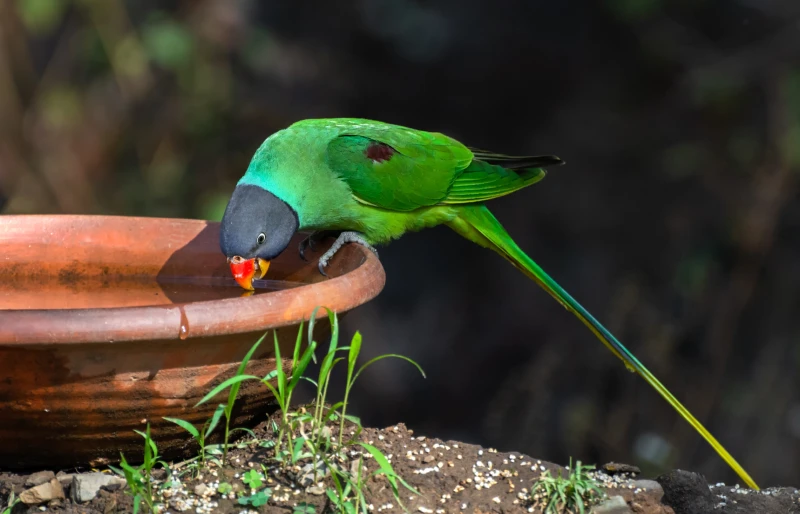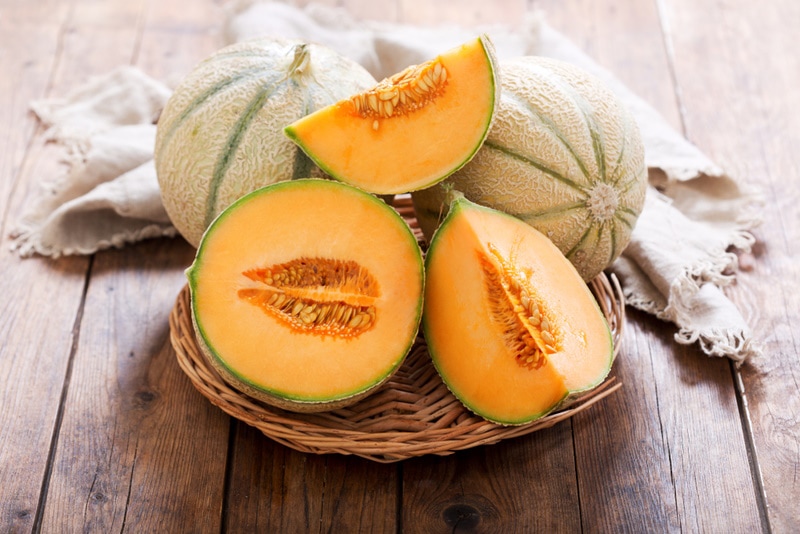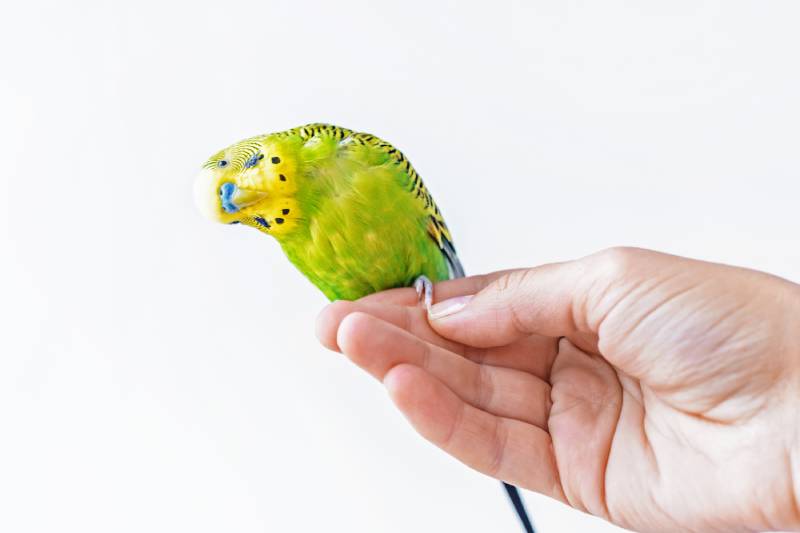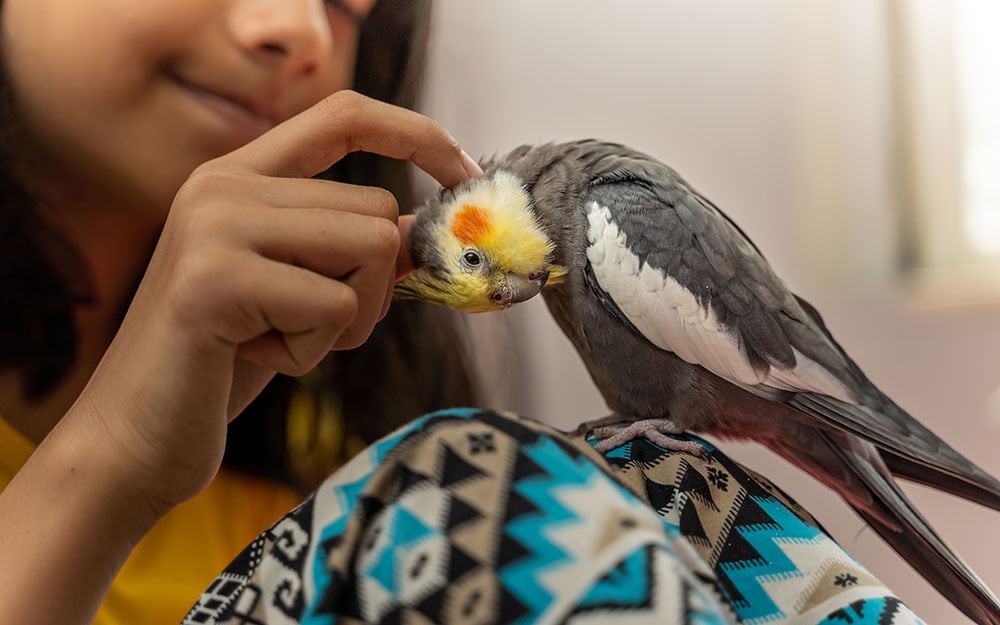Slaty-Headed Parakeet: Pictures, Personality, Food & Care Guide
By Jordyn Alger
Updated on

Parakeets are excellent family pets due to their charming personality and stunning plumage. If you are looking for a unique parakeet, look no further than the Slaty-Headed Parakeet. As the name suggests, they have a dark, slate-gray-colored head that starkly contrasts their brightly colored body. Most owners find the Slaty-Headed Parakeet to be an extraordinary creature, and after learning more about them, you’ll likely agree.
Species Overview
| Color: | Green body with a gray head |
| Size: | 15.5–16 inches |
| Weight: | 4.4 ounces |
| Wingspan: | 5.5–6 inches |
The Slaty-Headed Parakeet, like most parakeets, is a friendly companion that is easy to care for. They are small, delicate, and undeniably gorgeous birds that have captivated bird enthusiasts across the globe. Due to their friendly disposition and low-maintenance needs, the Slaty-Headed Parakeet is an excellent option for first-time bird owners.
Before bringing the Slaty-Headed Parakeet into your home, it’s best to learn more about their care requirements. In this article, we’ll discuss the bird’s natural habitat, temperament, and care requirements, so keep reading to learn more.
Slaty-Headed Parakeet Characteristics
History & Natural Habitat
In nature, the Slaty-Headed Parakeet lives in South Asian and Southeast Asian countries. Their natural habitat extends from Eastern Afghanistan to Vietnam, specifically the Western Himalayas to Arunachal Pradesh. Before winter hits (typically in the last week of October), they migrate to the valleys. They live primarily in the forests, where they seek shelter and forage for food.
The Slaty-Headed Parakeet is a fairly common bird in the wild, and their population appears to have no extreme fluctuations. They are not as common of pets as other parakeets, so bringing one into your home may prove to be a challenge.
Things to Know When Owning a Slaty-Headed Parakeet

Before bringing home a Slaty-Headed Parakeet, you’ll need to be well-informed about what it looks like to own one. Below, we will go into depth about the Slaty-Headed Parakeet’s temperament, vocalization habits, and appearance.
Temperament
The Slaty-Headed Parakeet can be a great pet for the right owner. Those who understand the Slaty-Headed Parakeet’s needs and personality will find that they are excellent companions with charming personalities. The Slaty-Headed Parakeet is an intelligent bird that can be trained to perform fascinating tricks, making them the star of any gathering.
Slaty-Headed Parakeets are typically friendly and social, and they like to spend a lot of time with their favorite humans. They are not especially demanding, but they can bite if they feel threatened. Therefore, it is crucial that adults supervise all interactions between young children and the Slaty-Headed Parakeet. Though the Slaty-Headed Parakeet is friendly, they may bite if they are frightened or injured from improper handling.
Sounds, Speech & Vocalizations
The Slaty-Headed Parakeet is not a silent bird, but they are not especially noisy either. They make a shrill, high-pitched noise when in flight and a high whine when resting. You may also hear your Slaty-Headed Parakeet emit various soft, almost musical sounds.

Slaty-Headed Parakeet Appearance
The Slaty-Headed Parakeet is a stunning bird. Juveniles will have a grayish-green face and a dull green head. There will be a pale green stripe beneath the cheeks to the hindcrown. It isn’t until adulthood that their brilliant colors truly shine.
Adult Slaty-Headed Parakeets have vivid green bodies with a slight blue tint. Their heads are a dark, ashy gray with a black stripe around the hindneck. Males have a patch of maroon on their inner median wings, while females do not. Their tail transforms from bright, emerald green to a deep blue before fading into a gentle yellow. As for their beak, the upper mandible is red while the lower is yellow.
- Lutino: Yellow bird with a pinkish head
- Albino: A bird with a total lack of feather pigmentation
Caring for the Slaty-Headed Parakeet
In addition to understanding the Slaty-Headed Parakeet’s temperament, speech, and appearance, it is also important to know how to care for this magnificent bird. Before adding a Slaty-Headed Parakeet to your family, consider whether or not you can provide for their needs.
The Slaty-Headed Parakeet is a highly social bird, and they need daily affection and attention. If you cannot provide that level of attention for your pet, you may need to consider housing multiple Slaty-Headed Parakeets so that they can socialize with each other. Slaty-Headed Parakeets typically get along well with each other, but they are not ideal companions for cats or dogs with high prey drive. Smaller mammals, such as rabbits or mice, are safe roommates for the Slaty-Headed Parakeet.
Slaty-Headed Parakeets usually groom themselves if they have a water dish inside of their enclosure. Be sure to provide your Slaty-Headed Parakeet with fresh, clean water so that they can keep themselves tidy and hygienic.
If your Slaty-Headed Parakeet’s self-grooming care appears to be slacking, reach out to your vet since it can indicate a medical issue. Their diet, housing, exercise, and healthcare are essential to their well-being.
Diet & Nutrition
Feeding your Slaty-Headed Parakeet a proper diet is an essential part of their care. In the past, people thought that birds only needed seed diets to remain healthy. However, seeds are high in fat and serve as occasional treats, but they should not make up the bulk of your Slaty-Headed Parakeet’s diet.
Instead, a high-quality parrot mix should be the primary source of their nutrition. In addition, you should supplement their meals with a rotation of fresh veggies, fruits, and nuts. Likewise, clean water should be readily available at all times.

Cage/Housing Requirements
The Slaty-Headed Parakeet is an active bird that enjoys climbing and playing. Therefore, their cage should be large enough to accommodate vertical and horizontal movement. It should also be large enough for your Slaty-Headed Parakeet to spread and flap their wings.
You should purchase a cage that is roomy enough to house toys, perches, and other cage features. If you are housing multiple Slaty-Headed Parakeets, you’ll need a larger cage or aviary. For instance, to house four Slaty-Headed Parakeets, the ideal cage dimension is 78.7” x 35.4”. Some Slaty-Headed Parakeet owners recommend cages as large as a Macaw cage.
Exercise
Since Slaty-Headed Parakeets are active birds, they need plenty of opportunities to exercise. You should allow your Slaty-Headed Parakeet outside of their cage each day so that they can fly and wander while safely supervised. Time outside of the cage will keep them active and enriched.
While inside the cage, there are ways to keep your Slaty-Headed Parakeet active. Since they enjoy climbing, it is recommended that you provide plenty of ropes and ladders for them to use in their cage. Furthermore, you can provide swings, perches, chewing toys, and foraging toys to keep them moving and enriched.
Health & Conditions
The Slaty-Headed Parakeet is generally a healthy bird, but there are some health conditions that they may be susceptible to. Severe conditions include polyomavirus infection and sarcocystosis, both of which can prove fatal. Another concern is hypovitaminosis A or a vitamin A deficiency. Slaty-Headed Parakeets may also develop psittacosis, also known as parrot fever.
- Psittacosis
- Polyomavirus infection
- Sarcocystosis
- Hypovitaminosis A
3 Little-Known Facts About the Slaty-Headed Parakeet
1. The Slaty-Headed Parakeet’s Population Is Stable
While there are plenty of bird species that are at risk, the Slaty-Headed Parakeet isn’t one of them. Currently, there is no evidence to suggest that the population is threatened or declining.
2. They Take Advantage of Old Dwellings
The Scaly-Bellied Woodpecker in Eastern Afghanistan constructs homes that the Slaty-Headed Parakeet will eventually make their nest in.
3. They Like Having Neighbors
Slaty-Headed Parakeets often make their nests close to other Slaty-Headed Parakeet pairs.

Conclusion
Slaty-Headed Parakeets are fantastic birds. While somewhat uncommon as pets, they are thriving in their natural habitat. These gorgeous parakeets are charming and easy to care for, making them excellent companions for first-time bird owners and experienced caretakers. If you have been considering the Slaty-Headed Parakeet for your household, we hope that this article has helped you learn more about this striking bird and decide whether or not they are right for you.
Featured Image Credit: Shubhrojyoti, Shutterstock











